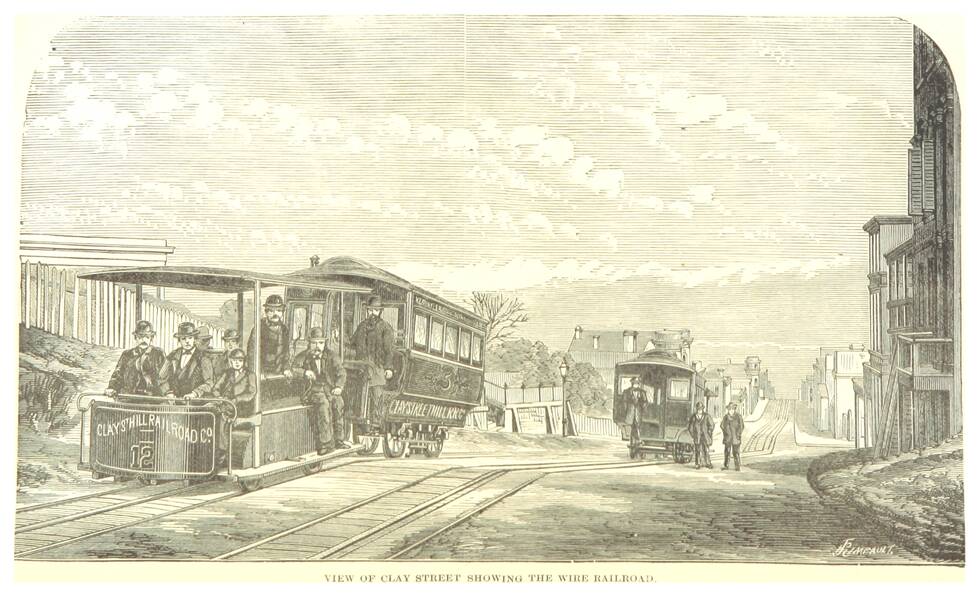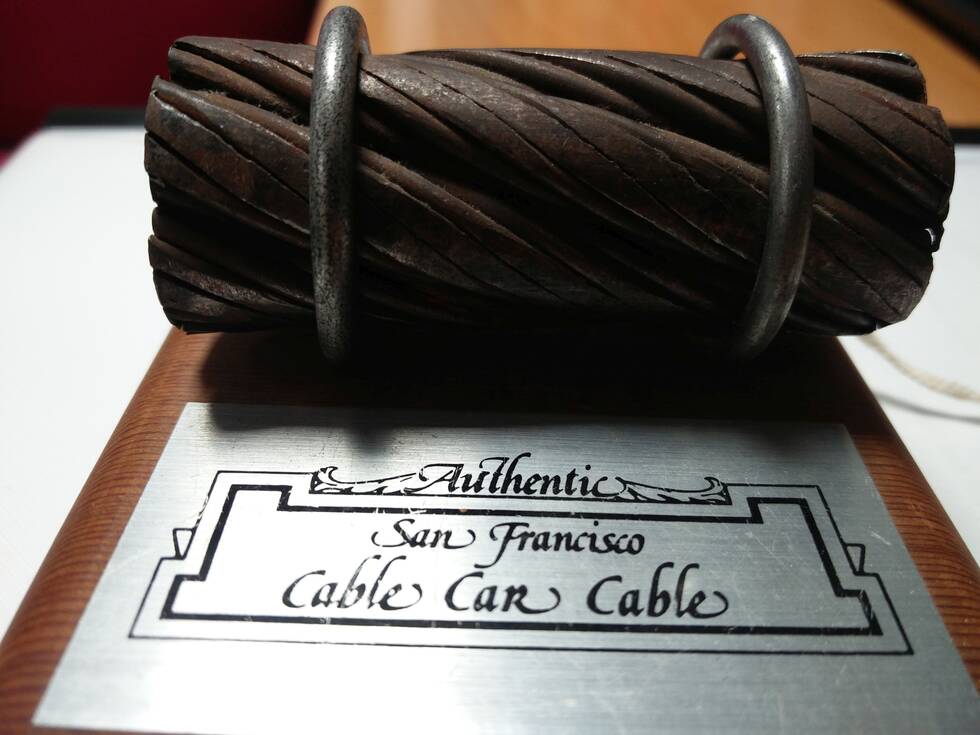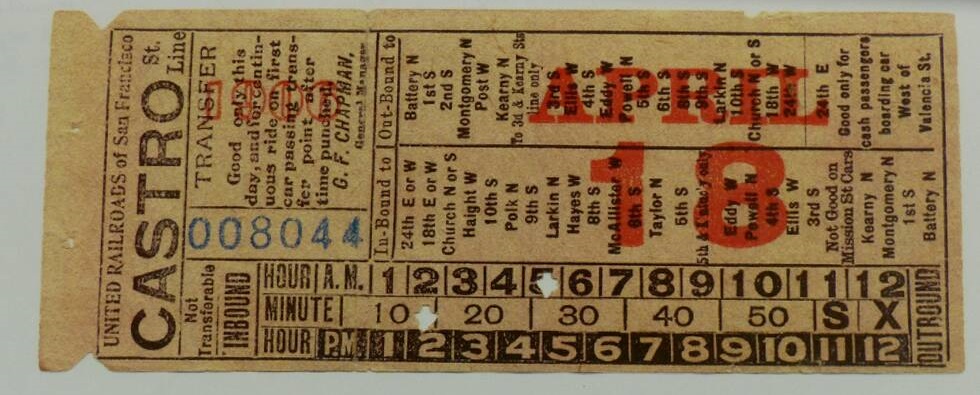The first successful cable operated tramway in the world – the San Francisco-based Clay Street Hill Railway – began to offer a regular service on 1st September 1873. The system involved a steam-driven continuously moving cable that was capable of hauling a fleet of non-motorised tramcars, together with their trailers, whenever the operator (known as a ‘gripman’) used the ‘grip’ that was suspended from the car to attach it to the cable.

(1) The Clay Street Tramway in its early years (1876). Source: the Mechanical Curator collection, British Library.
The inventor of the system – Andrew Smith Hallidie – was motivated after witnessing a horrific accident in 1869 in which a horse-drawn tramcar slipped backwards on the city’s steep wet cobblestones, resulting in the death of the horses. He responded by adapting a system used to haul mineral ore from mines.

(2) Clay Street Hill Cable Car at Clay Street and Van Ness Avenue circa October 1877. Andrew Hallidie stands on the open-air cable car between two seated women (source: San Francisco Municipal Transportation Agency)
At first the cable was powered by imported Welsh anthracite coal that was consumed at the rate of 10 tons per day. The stationary steam engines were converted to run on oil in 1901, which reduced the amount of dense smoke that they emitted. Ultimately they operated via much cleaner electrically powered motors. Other cable tramways were introduced subsequently and a total of 53 miles of track were laid down by the end of the nineteenth century. However, the calamitous earthquake and associated fires that devastated the city in 1906 threatened the future of the entire network as it was generally cheaper to replace the damaged cable tramways with conventional ‘streetcars’ powered by overhead lines. So, by 1912, only eight cable car lines survived, servicing the routes that were too steep for ordinary electric trams to negotiate.

(3) Damage caused to Cable Car 155 and the doorway of the cable car house on Washington Street as a result of the earthquake on the morning of April 18 1906. This was rebuilt after the earthquake and is now the site of the Cable Car Museum and also a National Registered Landmark (source: San Francisco Municipal Transportation Agency).
Even these lines came under pressure once more powerful motor buses were introduced during the 1920s and 1930s. In 1947 a city ordinance envisaged the replacement of all remaining cable lines as quickly as possible. This prompted a vigorous community campaign that succeeded in convincing the authorities that the cable car’s appeal as a valuable tourist attraction far outweighed their operational cost. Since then, the remaining cable tramways have been comprehensively rebuilt and upgraded following temporary closures in 1982-4 and again in 2017-9. The system was also closed down between March 2020 and August 2021 in response to the Covid pandemic. Each year they carry seven million passengers, most of them tourists, and are now protected as National Historic Landmarks.

(4) The San Francisco cable tramway operating in June 2009 (source: Pavel Špindler, public domain image).
The San Francisco cable tramway was emulated in several other parts of the world including Edinburgh and, local to Crich Tramway Village, Matlock. Images of the Matlock cable tramway can be seen here. Most of these systems are no longer operational. A somewhat similar street operated tramway – the Great Orme Tramway – continues to convey tourists from Llandudno up to the summit of the Great Orme over 120 years since its inception in 1902. Technically this is a funicular railway rather than a cable-operated tramway, as the cable is not continuously running and the tramcars are permanently attached to it, so they stop and start when it does without the intervention of a ‘gripman’.
The National Tramway Museum has two artefacts that are associated with the San Francisco cable cars. They include a piece of the cable itself, mounted as a souvenir item and, rather more remarkably, a ticket that was issued on the day of the 1906 earthquake just two minutes before the disaster occurred.

A piece of San Francisco cable car tramway cable in the National Tramway Museum collection (photo: Jim Dignan).

Copy of a ticket issued two minutes before the earthquake struck San Francisco on April 18th 1906 (National Tramway Museum collection).
Image References:
Image 1: Source: the Mechanical Curator collection, a set of over 1 million images scanned from out-of-copyright books and released to Flickr Commons by the British Library, accessed here: https://commons.wikimedia.org/w/index.php?curid=31596246
Image 2: Image X7307 from the San Francisco Municipal Transportation Agency Photo Archive: https://www.sfmta.com/getting-around/muni/cable-cars/cable-car-history / https://www.sfmta.com/about-us/photo-department-archive
Image 3: Image U00776 from the San Francisco Municipal Transportation Agency Photo Archive: https://www.sfmta.com/getting-around/muni/cable-cars/cable-car-history / https://www.sfmta.com/about-us/photo-department-archive
Image 4: https://commons.wikimedia.org/w/index.php?curid=54478141. Public domain image.
